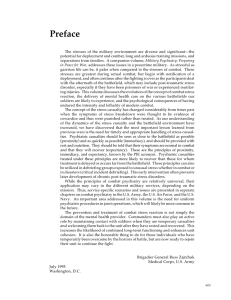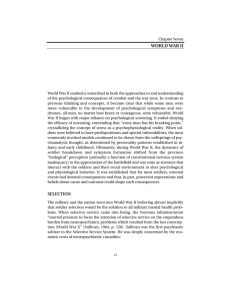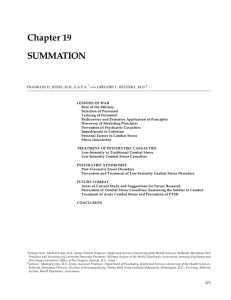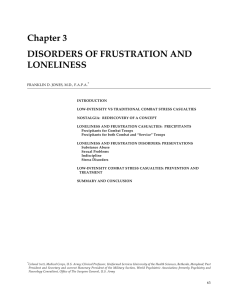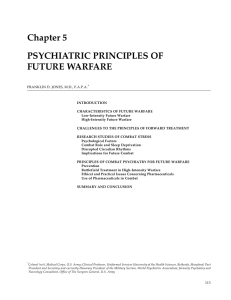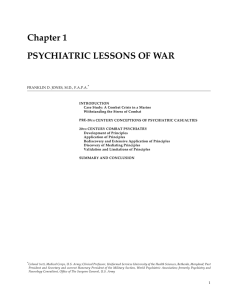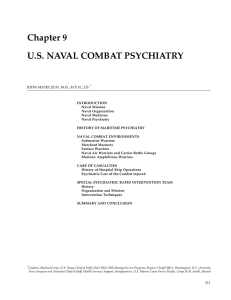Foreword
advertisement
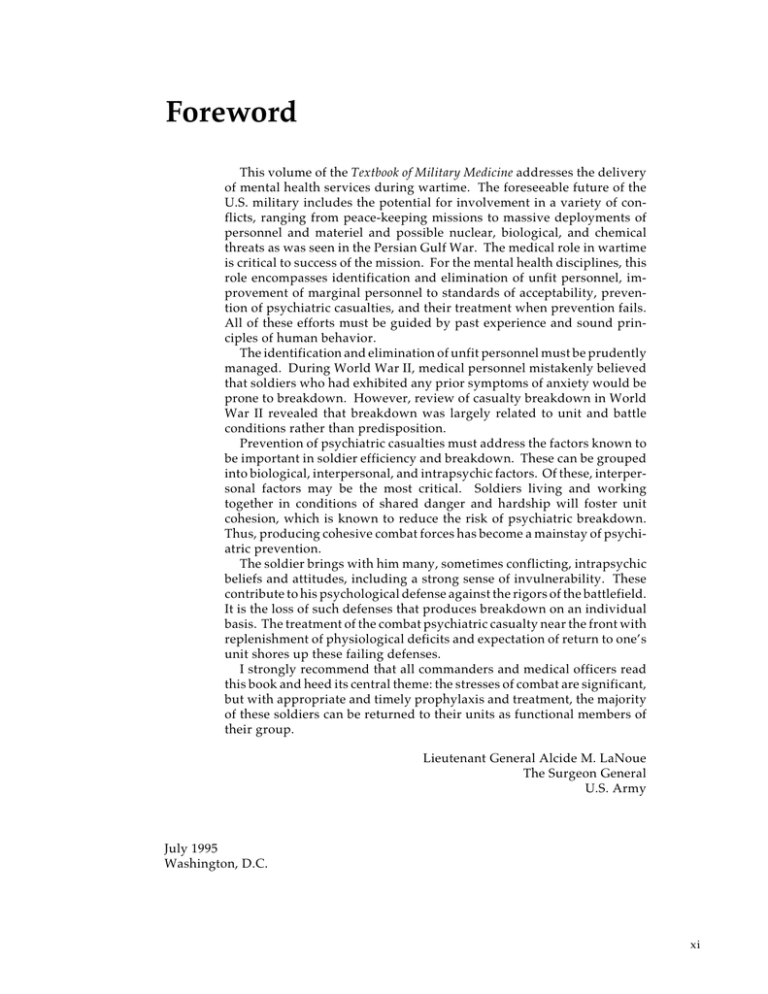
Foreword This volume of the Textbook of Military Medicine addresses the delivery of mental health services during wartime. The foreseeable future of the U.S. military includes the potential for involvement in a variety of conflicts, ranging from peace-keeping missions to massive deployments of personnel and materiel and possible nuclear, biological, and chemical threats as was seen in the Persian Gulf War. The medical role in wartime is critical to success of the mission. For the mental health disciplines, this role encompasses identification and elimination of unfit personnel, improvement of marginal personnel to standards of acceptability, prevention of psychiatric casualties, and their treatment when prevention fails. All of these efforts must be guided by past experience and sound principles of human behavior. The identification and elimination of unfit personnel must be prudently managed. During World War II, medical personnel mistakenly believed that soldiers who had exhibited any prior symptoms of anxiety would be prone to breakdown. However, review of casualty breakdown in World War II revealed that breakdown was largely related to unit and battle conditions rather than predisposition. Prevention of psychiatric casualties must address the factors known to be important in soldier efficiency and breakdown. These can be grouped into biological, interpersonal, and intrapsychic factors. Of these, interpersonal factors may be the most critical. Soldiers living and working together in conditions of shared danger and hardship will foster unit cohesion, which is known to reduce the risk of psychiatric breakdown. Thus, producing cohesive combat forces has become a mainstay of psychiatric prevention. The soldier brings with him many, sometimes conflicting, intrapsychic beliefs and attitudes, including a strong sense of invulnerability. These contribute to his psychological defense against the rigors of the battlefield. It is the loss of such defenses that produces breakdown on an individual basis. The treatment of the combat psychiatric casualty near the front with replenishment of physiological deficits and expectation of return to one’s unit shores up these failing defenses. I strongly recommend that all commanders and medical officers read this book and heed its central theme: the stresses of combat are significant, but with appropriate and timely prophylaxis and treatment, the majority of these soldiers can be returned to their units as functional members of their group. Lieutenant General Alcide M. LaNoue The Surgeon General U.S. Army July 1995 Washington, D.C. xi





